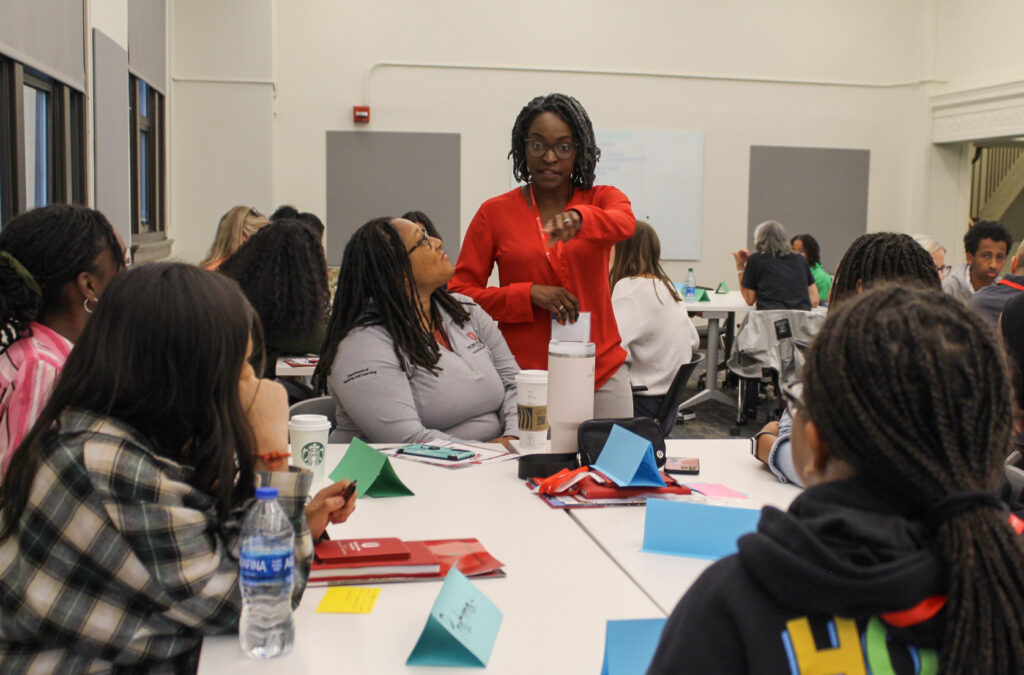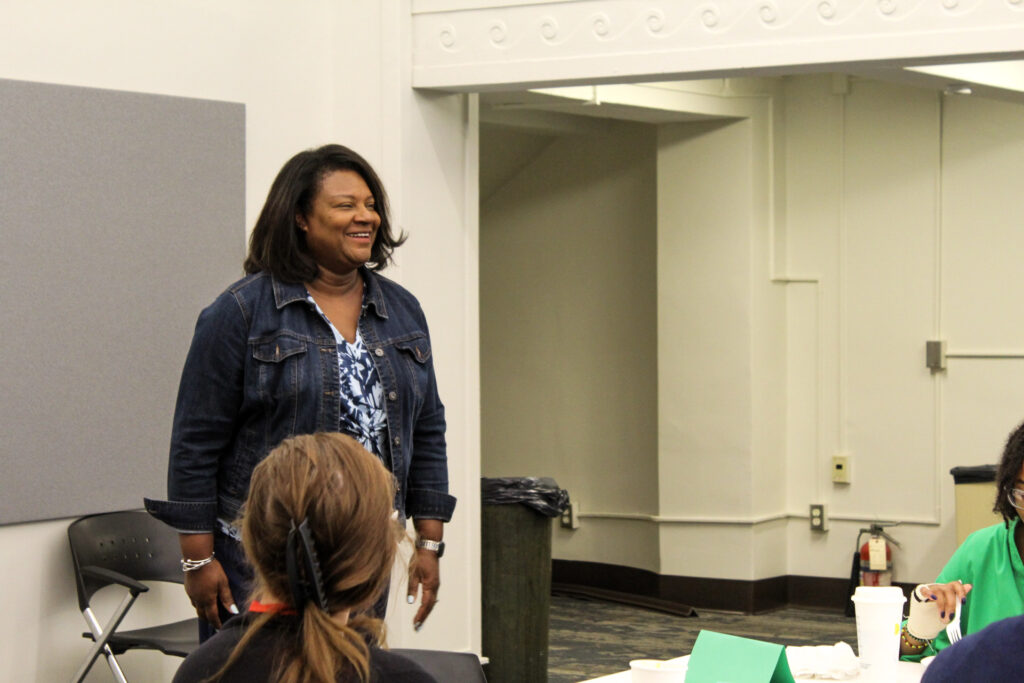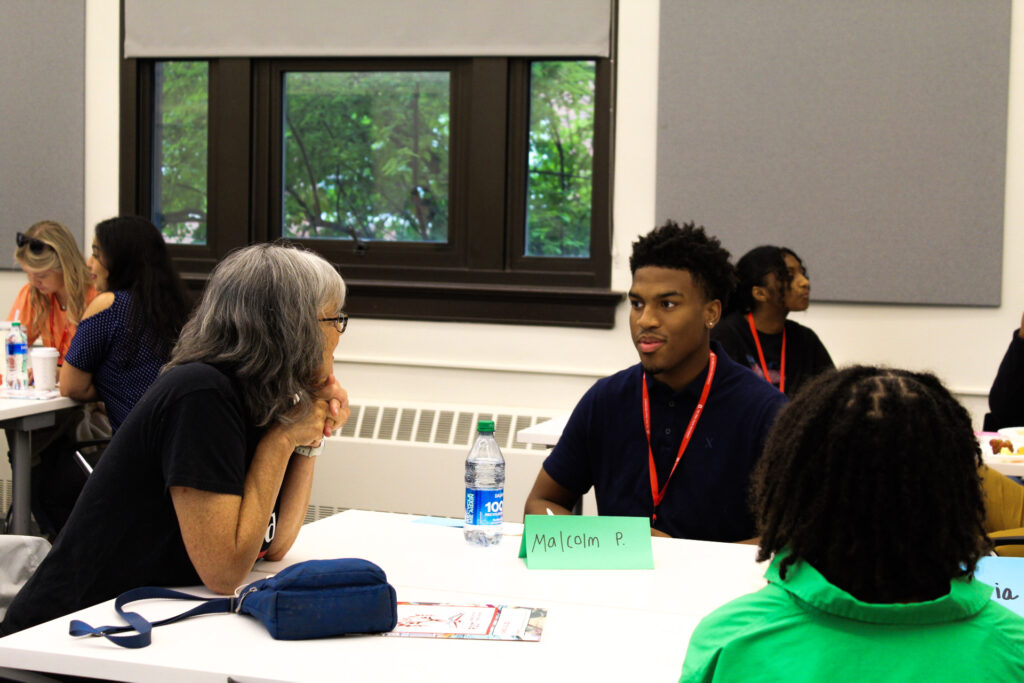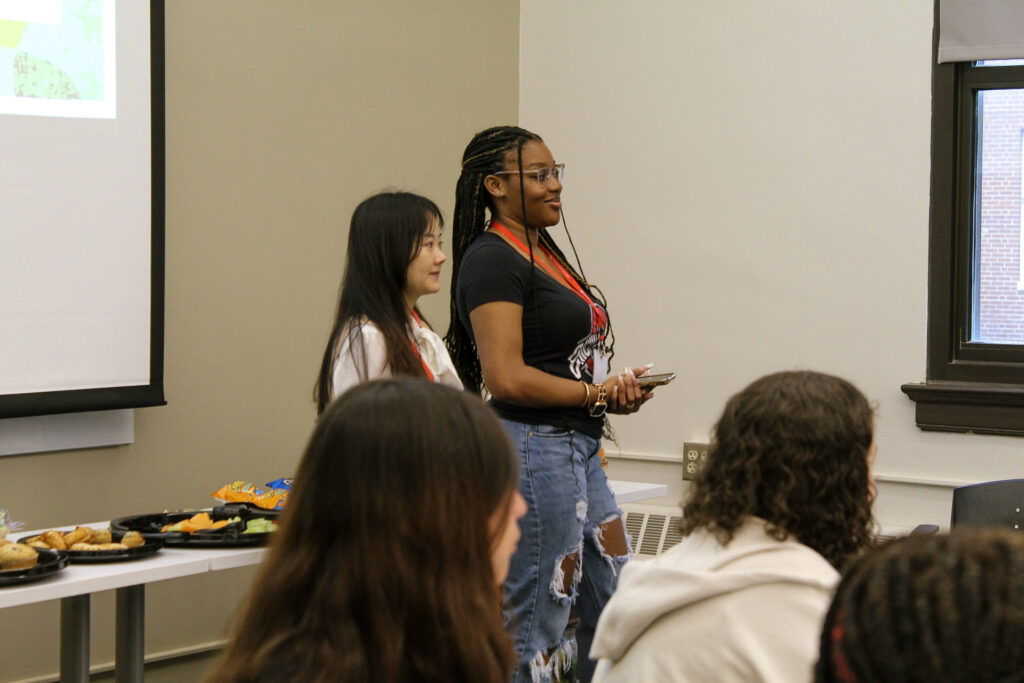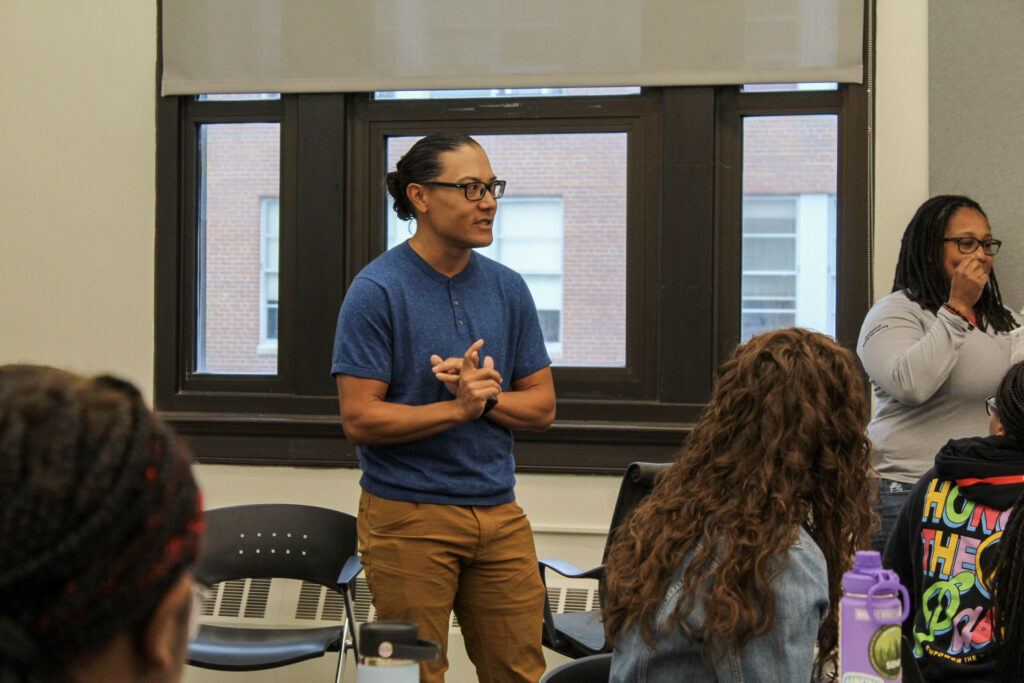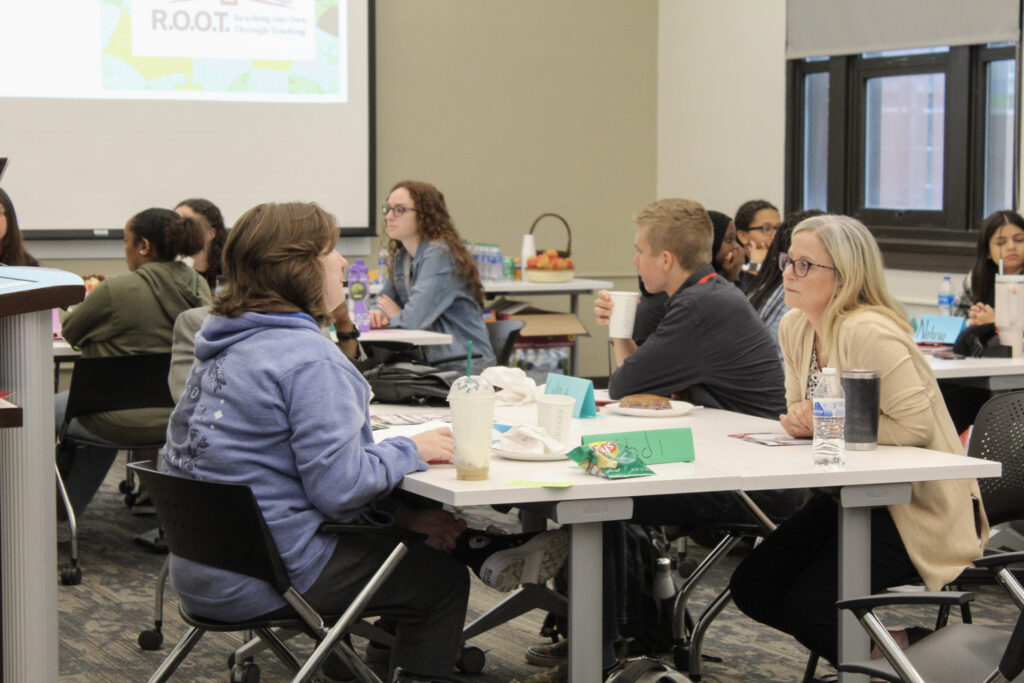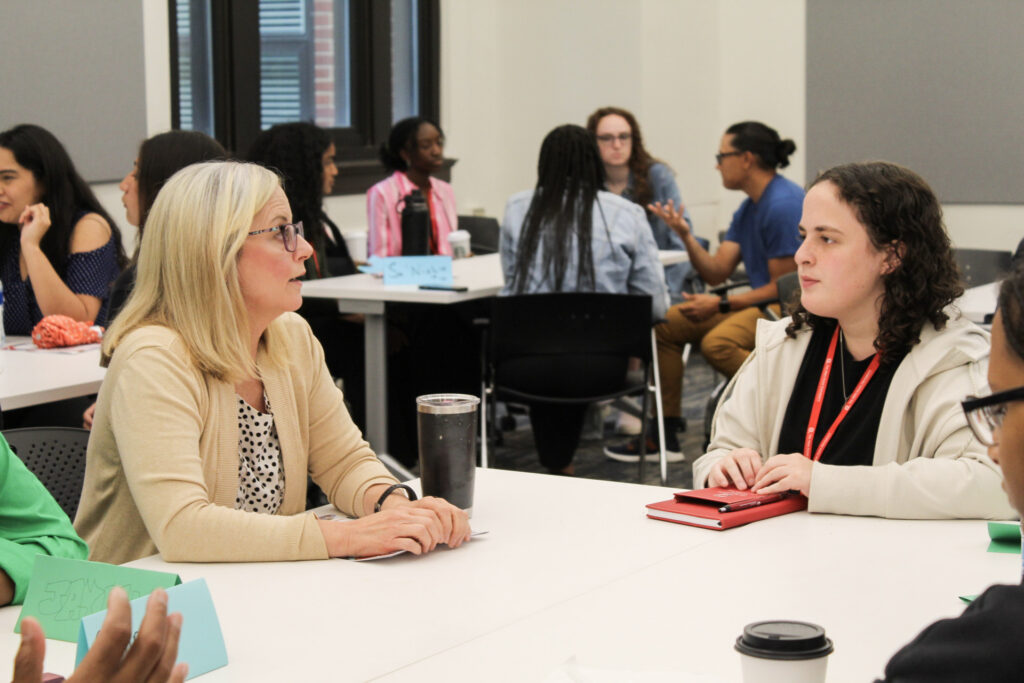
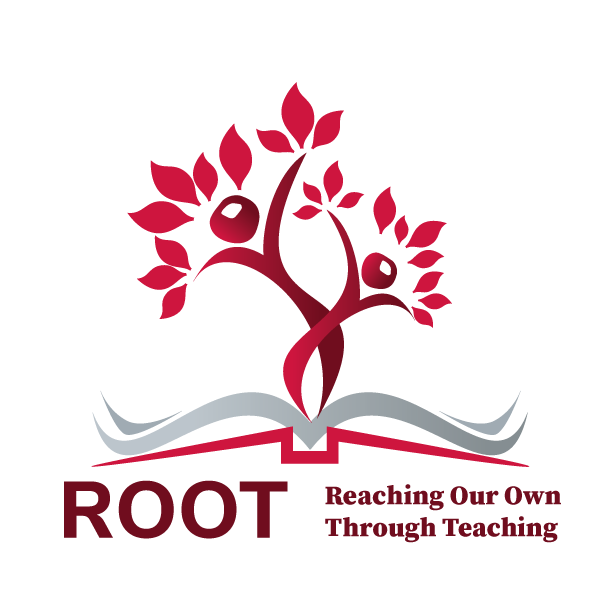
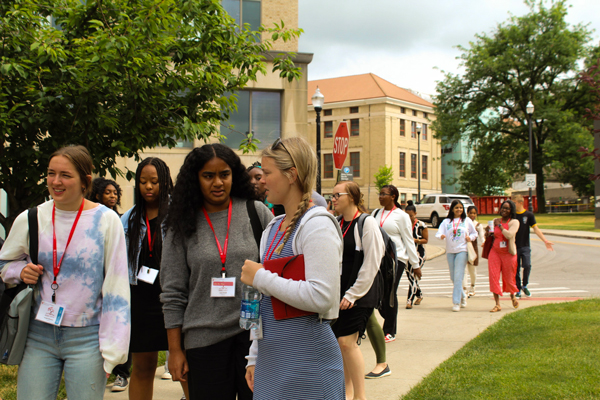
Did you know? According to the Ohio Department of Education, 94% of teachers in Ohio are white and do not reflect the steadily diversifying racial population.
EXECUTIVE SUMMARY
This summer we were honored to host our 2nd Project ROOT Summer Experience. The acronym ROOT stands for “Reaching Our Own Through Teaching,” and the program grew out of a desire to address the national educator shortage in ways that
- help diversify the field of education and
- help emerging Central Ohio educators see the possibilities in the field.
During the four-day, on-campus program, 22 high school juniors and seniors from 13 school districts participated in a range of activities, including workshops on the college admissions process and paying for college; a sample college course on equity & diversity in education; roundtable discussions with EHE program faculty and staff; and a panel discussion with in-service and community educators who shared how their studies in education led to their current careers.
One particular highlight of this year’s programming was the number of cross-campus units ROOT students engaged with: The Wexner Center for the Arts, the Dennis Learning Center, The Hale Black Cultural Center, The Office of Student Life, and the Center for Video Ethnography and Discourse Analysis. Through these partnerships, students had multiple opportunities to see the variety of spaces in which educators can make an impact.
I liked having the opportunity to not only tour parts of the school but be able to speak with actual people who work at or attend the university.High School Student
DATA
13 DISTRICTS
I liked that I could network with people and ask questions about something that I was deeply passionate about. I also liked how all of the students involved had similar interests so you never felt alone or out of place. High School Student
Students of Color
Fifteen students identified as students of Color.
LGBTQIA+
Five students identified as a members of the LGBTQ+ community
68% of Students
indicated they were interested in education prior to attending the Project ROOT Summer Experience.
91% of Students
indicated they are interested in education after attending the Project ROOT Summer Experience.
Students reported that Project ROOT has positively shifted how they feel about:
- Attending College 91%
- Paying for College 78%
- Applying to OSU” 91%
When asked what they most liked about the Project ROOT Summer Experience, one student replied: “I liked that I could network with people and ask questions about something that I was deeply passionate about. I also liked how all of the students involved had similar interests, so you never felt alone or out of place.”
Budget Snapshot
Costs per student for the 4-day program– $335.00/student
“I would recommend”
When asked how likely they are to recommend Project ROOT to a friend or classmate, 91% of the students responded with “yes”.
I learned that if you want something you can go and get it even if it takes time. I also learned that making connections is so important and I made so many through it and am extremely grateful.High School Student
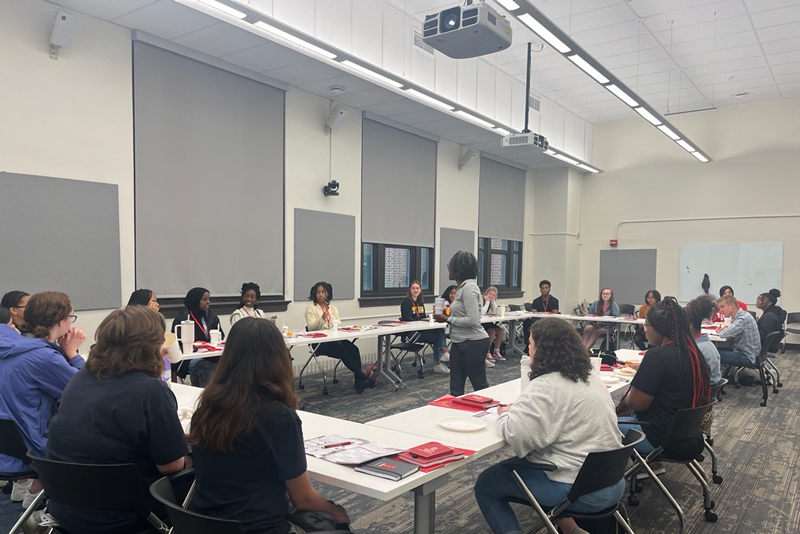
PROGRAM SNAPSHOT
On the first day of the program, students were introduced to the The Ohio State University and the College of Education and Human Ecology. We toured campus on our way to the Center for Belonging and Social Change, where students learned about the admissions process and why OSU is a great choice for their college experience. After this discussion, students met with EHE program representatives who led round table discussions on career pathways. We ended the day with time for students to reflect, ask questions, and socialize.
DAY 1
- Breakfast and Introductions
- Admissions Convo & Campus Tours
- Lunch and Learn: Programs and Pathways Roundtable
- Unpack the Day
- Wrap Up
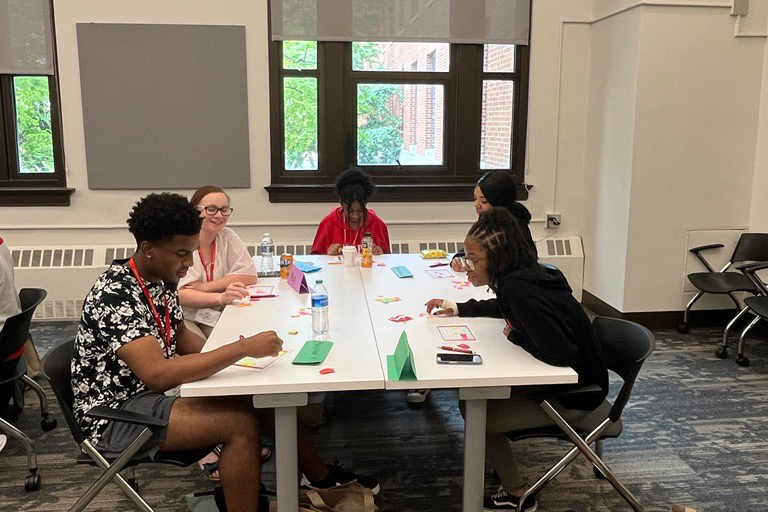
During the second day of the program, students had breakfast with EHE faculty from all three departments, followed by a session on applying to college. This presentation built on the admissions discussion from Day 1. During lunch, students learned about opportunities to study abroad and the value of doing so. Session presenters included EHE staff, graduate and undergraduate students. We ended the day with an abbreviated version of the EHE course Equity and Diversity in Education.
DAY 2
- Breakfast and Recap with EHE Faculty
- Workshop: Applying to College
- Lunch and Learn with EHE Staff
- Sample College Class: Equity and Diversity in Education
- Wrap Up
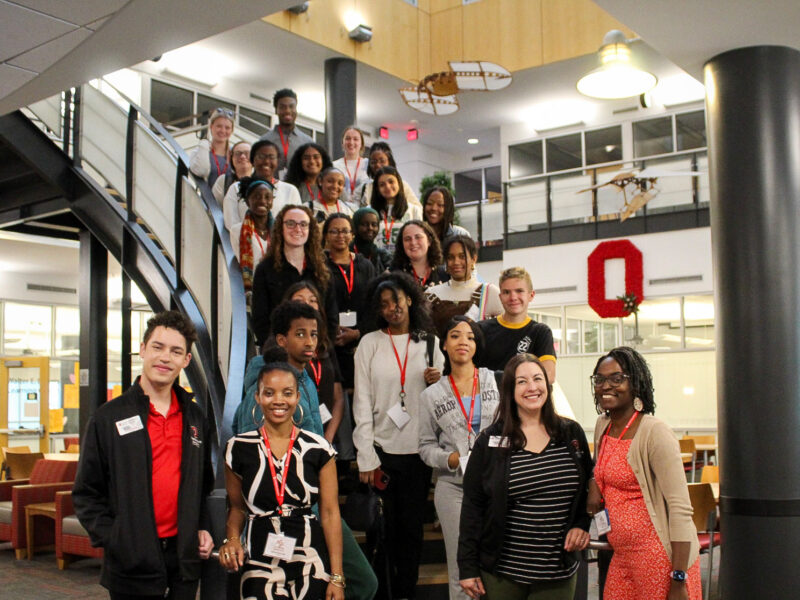
On Day 3, students met with members of the Weiler Family—key champions of public education in Central Ohio–to discuss education careers and the value of educational and community engagement. This round table discussion was followed by a visit to the Dennis Learning Center, where students received tips and strategies for preparing for and succeeding in college. Next up was a Lunch & Learn led by Dr. Stephanie Power-Carter, which focused on undergraduate research opportunities. The day ended with an Office of Student Life session on funding college.
DAY 3
- Breakfast and Recap with the Weiler Family
- Visit: Dennis Learning Center
- Dennis Learning Center Workshop: Gearing Up for Higher Ed and First Gen Success
- Lunch and Learn: with Dr. Stephanie Power-Carter
- Funding College

During the final day of the program, students began the morning engaging with a panel of practicing Central Ohio educators. During their Wexner Center for the Arts tour, students not only enjoyed visual arts, but talked about arts-based education in out of school spaces. We closed the program with lunch, a BINGO raffle with EHE SWAG, and distributing student certificates.
DAY 3
- Breakfast and Educator Panel
- Visit: Wexner Center for the Arts
- Lunch and Closing Ceremony
WHO MADE IT HAPPEN
PROGRAM LEADS
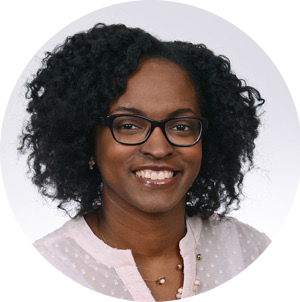
Jenell Igeleke Penn, PhD
Director
Assistant Director of Teacher Education
Assistant Professor – Clinical
Department of Teaching and Learning
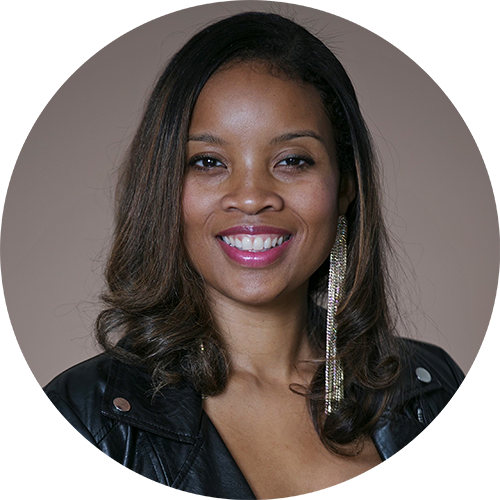
Carlotta Penn, PhD
Co-Director
Senior Director of Partnerships and Engagement
Office of Engagement, Discovery, and Global Education (EDGE)
THANK YOU
This program is presented by the College of Education and Human Ecology’s Office of the Dean, Department of Teaching and Learning, and Office of Engagement, Discovery, and Global Education.
Special Thanks:
- EHE Dean’s Office
- EHE Office of Advancement
- The Dennis Learning Center
- Office of Student Life
- Center for Video Ethnography and Discourse Analysis
- Wexner Center for the Arts
- Hale Black Cultural Center
- Program Instructors and Panelists & Participating Faculty, Staff, and Community Members
- Office of Academic Affairs
